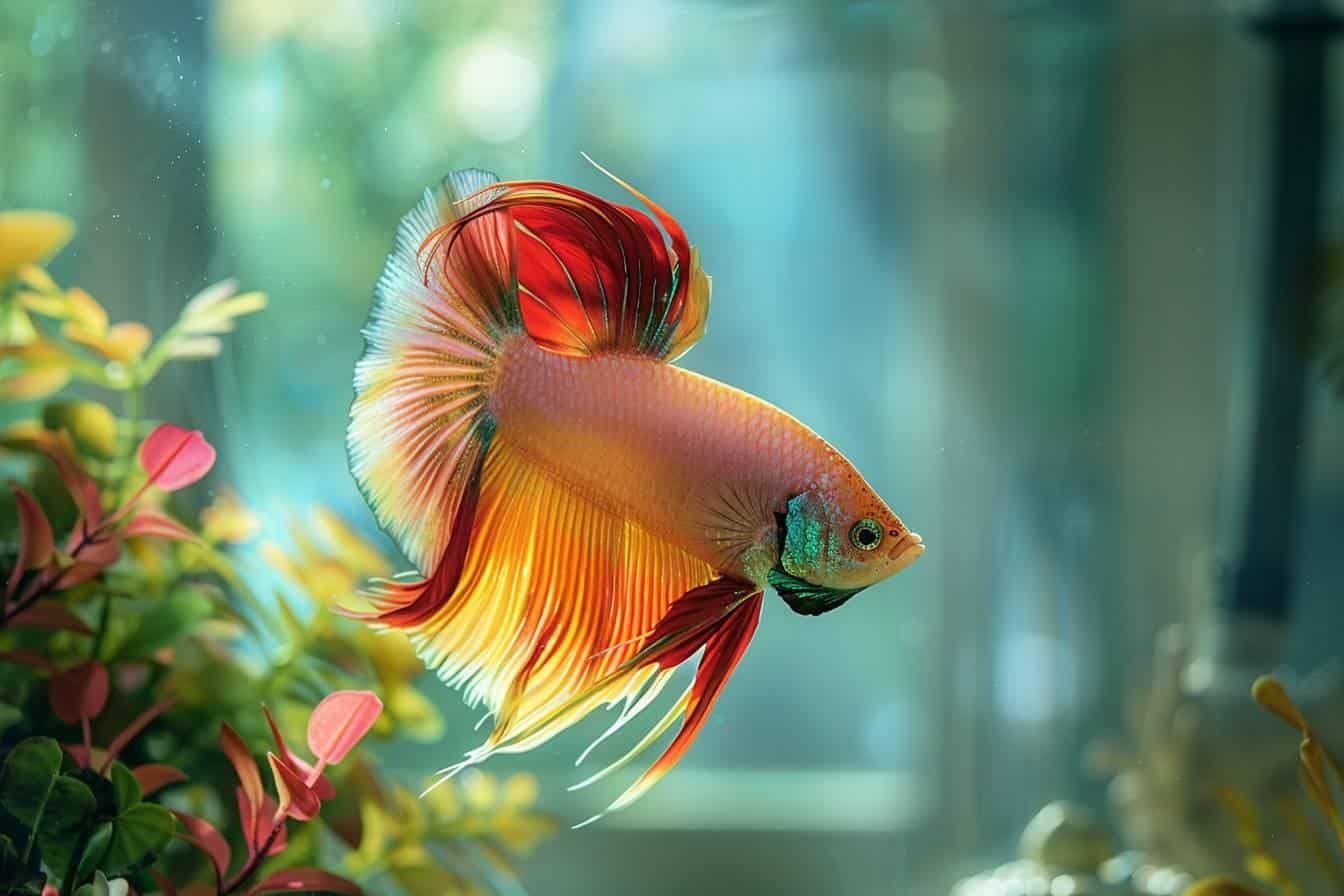The article in brief
Breeding xiphos, exciting ovoviviparous fish, requires specific conditions to be successful. Here are the key points:
- Gestation cycle 4 to 6 weeks, up to 100 fry per litter
- Ideal conditions temperature 21-26°C, pH 7-8, well planted aquarium
- A varied diet flakes, pellets and live feed to stimulate reproduction
- Recommended ratio 3 females to 1 male, avoid cohabiting with other poeciliids
- Post-birth care : protection of fry and a diet suited to their growth
Ah, the reproduction of xiphos ! A fascinating subject for any self-respecting aquarist. As a pet shop assistant for over 10 years, I've had the opportunity to observe and breed many specimens of this fascinating species. Let me guide you through the secrets of their reproduction and give you a few tips for successful breeding.
Unique characteristics of xipho reproduction
The xipho, or Xiphophorus hellerii to give it its scientific name, is an ovoviviparous fish with astonishing characteristics. Unlike many species, the female xipho incubates eggs inside her body and gives birth to fry that are already formed. It's a fascinating spectacle that I've been lucky enough to observe on several occasions in my aquariums.
Reproduction cycle
Xipho gestation generally lasts between 4 and 6 weeks. At the end of this period, the female can give birth to an impressive litter of 20 to 100 young. It's a real miracle of nature! I once had a particularly prolific female give birth to over 80 young at once. Believe me, it was quite a challenge managing all those new arrivals!
Physiological particularities
An interesting feature of the xipho is the ability of females to store sperm from males. This allows them to have several successive litters without further fertilisation. It's as if nature has given them reproductive insurance! What's more, males can sometimes be real latecomers when it comes to sexual development. Some take up to 6 months to fully develop their male attributes.
Signs of pregnancy
How can you tell if your female xipho is pregnant? It's simple: look at her belly. A female ready to give birth will have a bulging abdomen and a characteristic dark patch. The first time I spotted these signs, I was as excited as a child on Christmas Eve!
Practical advice for successful reproduction
Now that we've covered the basics, let's move on to the practical aspects. How do you create the ideal conditions for reproduction of your xiphos ? Here are my recommendations, based on many years of experience and observation.
Optimal breeding conditions
To encourage reproduction, it is vital to recreate a favourable environment. Here are the parameters to be respected:
- Temperature: between 21 and 26°C
- pH: 7 to 8
- Hardness: between 10 and 30 GH
Don't forget that these fish appreciate a well-planted aquarium with plenty of hiding places. This is essential for the well-being of the adults and the survival of the fry. I've always had excellent results using fast-growing plants such as Ceratophyllum.
Food and care
A varied, high-quality diet is essential to stimulate reproduction. Personally, I alternate between quality flakes, pellets and live foods such as daphnia. It's a real treat for the xiphos and boosts their vitality!
Here is a summary of the foods I recommend:
| Type of food | Frequency | Benefits |
|---|---|---|
| Flakes | Daily | Basic nutrition |
| Granules | 2-3 times a week | Protein intake |
| Live food | 1-2 times a week | Reproduction stimulation |
Population management
For harmonious breeding, I recommend a ratio of 3 females to 1 male. This prevents the males from becoming too oppressive towards the females. Believe me, I learned this lesson the hard way during my first attempts at breeding!
There is also a risk of hybridisation. Xiphos can reproduce with platyswhich belong to the same genus. If you want to preserve pure lines, avoid cohabiting with other poeciliids such as the guppys or mollys.

Post-birth care and maintenance
The big day has arrived: your xiphos have reproduced! But the work doesn't stop there. Here are a few tips to ensure the survival and growth of your new fry.
Protecting newborn babies
Xipho fry are relatively large at birth, but are still vulnerable. If possible, separate them from the adults to prevent them ending up as snacks. I often use a special rearing tank or floating nesting boxes to protect them during their first few weeks of life.
Growth and development
Xipho fry grow quite slowly. It takes about a year for them to reach adult size. Patience is the key word! To encourage their development, I recommend :
- Suitable feed (fry powder, artemia nauplia)
- Regular water changes (around 20% per week)
- Regular monitoring of water parameters
Remember that each fry is unique. Some will grow faster than others, and that's perfectly normal. The important thing is to provide them with the best possible conditions in which to flourish.
In conclusion, breeding xiphos is an exciting adventure that requires patience and attention. But believe me, there's nothing more rewarding than seeing your own fry grow into magnificent adults. So give it a go, and don't hesitate to share your experiences. Who knows, maybe one day we'll be sharing our breeding tips over a nice cup of coffee!
External sources :
